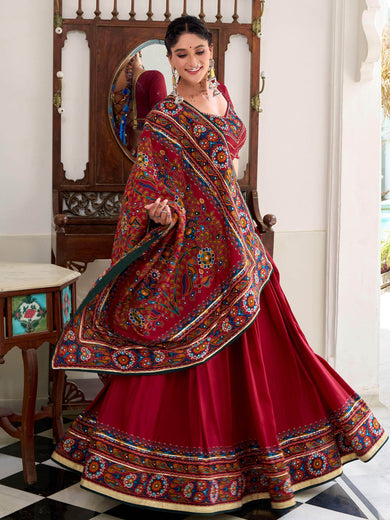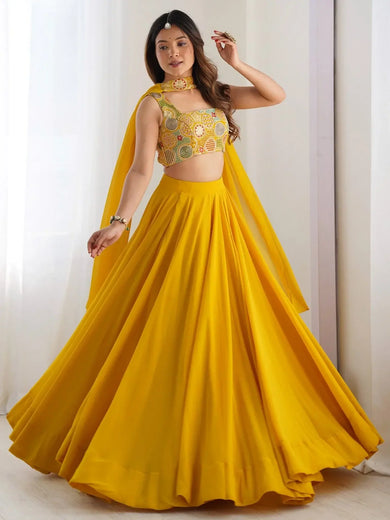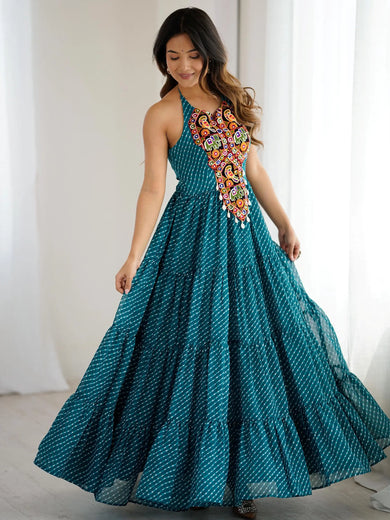The Future of Ethnic Fashion: Predicting the future trends in ethnic wear based on current fashion movements
The ethnic fashion industry, which is distinguished by its rich cultural heritage, has evolved over the years in a significant way. When contemplating the future of ethnic wear, it is important to analyse current fashion movements that serve as precursors to upcoming trends. Fashion is being redefined by the amalgamation of tradition and modernity, both on the runway and on the streets. Throughout this exploration, we will navigate through the currents of contemporary fashion to predict future trends in ethnic wear.
Fusion of Tradition and Modernity:
Traditional elements are often combined with modern aesthetics in ethnic fashion. There has been an increase in the number of designers exploring innovative ways to incorporate age-old craftsmanship with contemporary styles. The amalgamation of traditional and contemporary tastes caters to a diverse audience, striking a balance between cultural authenticity and the evolving tastes of modern consumers. The future will bring even greater seamless integration, with designers experimenting with unconventional materials, silhouettes and embellishments.
Sustainable and Ethical Practices:
The global shift towards sustainability has profoundly impacted the fashion industry, and ethnic wear is no exception. It is becoming increasingly apparent that consumers are aware of the environmental and ethical aspects of clothing choices. This has increased demand for sustainable, ethically produced ethnic fashion. We can expect a continued emphasis on eco-friendly fabrics, traditional handloom techniques, and ethical sourcing in the future. Sustainability is likely to play a central role in designers' creations, reflecting a deep commitment to both craftsmanship and the environment.
Revival of Traditional Crafts:
Despite often being on the verge of being forgotten, traditional ethnic fashions have experienced a revival in recent years. Bringing age-old techniques to the forefront by collaborating with designers allows them to simultaneously preserve cultural heritage and offer unique, handcrafted pieces. This trend is anticipated to gain momentum with a resurgence of intricate embroidery, weaving, and dyeing techniques. The celebration of artisanal skills will not only contribute to the preservation of cultural identities but will also allow consumers to gain an understanding of the stories behind their clothing.
Inclusive Sizing and Representation:
Diversity and inclusivity have been increasingly important in the fashion industry, resulting in a significant change in the perception of beauty and style. As a result, the ethnic fashion landscape increasingly emphasises inclusive sizing and representation. In the future, there is a likelihood that size ranges will expand, catering to a greater variety of body types. Furthermore, diversity in models will continue to play a pivotal role in challenging conventional beauty standards and in promoting a more inclusive and representative vision of ethnic fashion.
Technological Integration:
The intersection of technology and fashion is an ongoing phenomenon, and ethnic wear is no stranger to this alliance. With the introduction of virtual fashion shows and virtual reality try-ons, technology has radically altered the way ethnic fashion is experienced. We can anticipate further integration in the future, including the incorporation of smart textiles, digital embellishments, and customised designs. A seamless integration of tradition and technology will give consumers a dynamic and interactive experience when shopping for ethnic wear.
Conclusion:
Ethnic Plus explores the future of ethnic fashion through the lens of tradition, sustainability, inclusivity, craftsmanship, and technology. The changing landscape is a testament to the industry's ability to adapt and innovate as it celebrates the inherent diversity of ethnic clothing. As designers continue to push boundaries and consumers embrace a more conscious approach to fashion, ethnic wear will offer a harmonious combination of past, present, and future.







